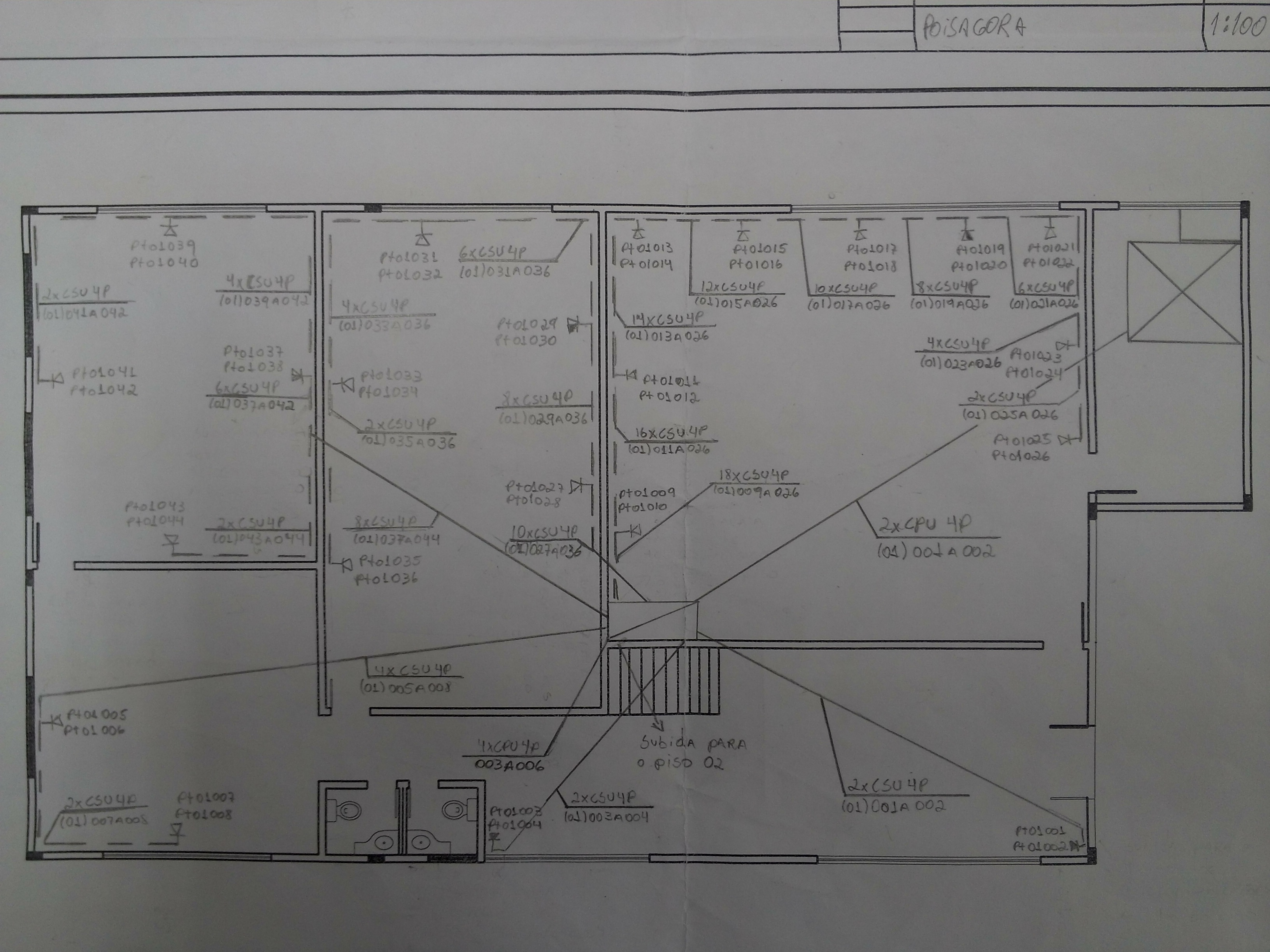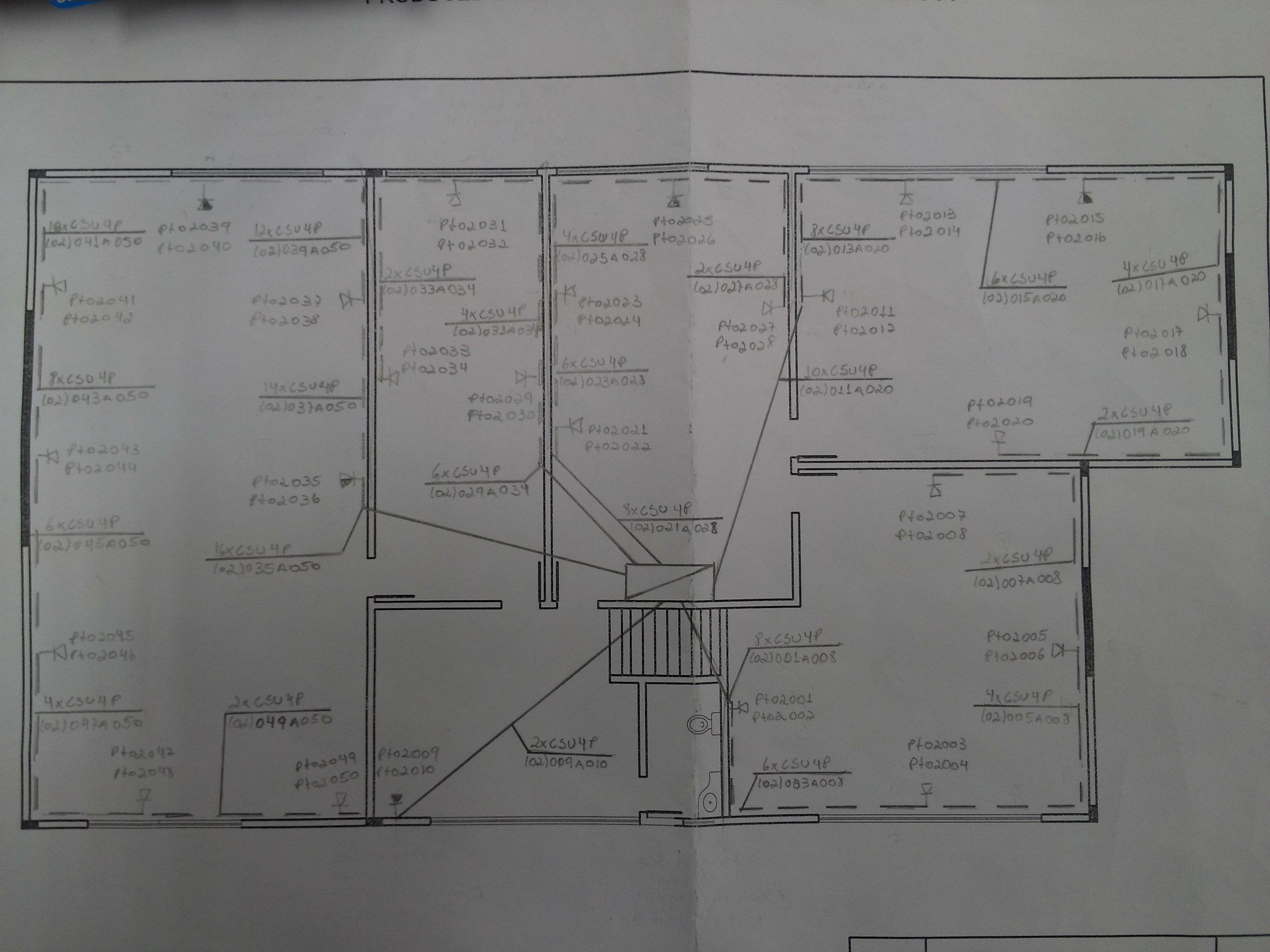Projeto Integrador - 2013.1 - Pois Agora
Equipe Pois Agora
- Gabriel Souza
- Gustavo Silva
- João Martins
- Kauly Bohm
08/07/2013
- Decidimos o nome da equipe; (Pois Agora)
- Pensamos Sobre o esqueleto do projeto;
- Pensamos sobre algumas soluções(restabelecimento do serviços; configuração de: DHCP, DNS e SMTP; Backup);
- Pensamos sobre algumas etapas em referência à matéria de programação (teste de portas abertas; teste de serviços rodando);
- Fizemos verificações de comandos para analisar se estes podem ser incluídos no projeto;
09/07/2013
- Instalamos o Ubuntu-server em duas máquinas: filial e matriz;
- Feito a configuração das interfaces eth0 de cada unidade inserindo nas mesmas os IPs válidos disponibilizados com a máscara 255.255.255.192:
vi /etc/network/interfaces
</syntaxhighlight>
Matriz:
auto eth0
iface eth0 inet static
address 200.135.37.97
netmask 255.255.255.192
gateway 200.135.37.126
</syntaxhighlight>
Filial:
auto eth0
iface eth0 inet static
address 200.135.37.101
netmask 255.255.255.192
gateway 200.135.37.126
</syntaxhighlight>
- Restartamos o serviço para validar as informações:
/etc/init.d/networking restart
</syntaxhighlight>
- Realizado a instalação do ssh em ambas as máquinas;
aptitude install ssh
</syntaxhighlight>
- Passamos o cabeamento no RAC reservado para os IPs válidos;
- Conseguimos acesso com sucesso nos dois servidores via SSH;
teste@iteste:~$ ssh root@200.135.37.97
+-----------------+
|EQUIPE POIS AGORA|
| ACESSO RESTRITO |
+-----------------+
root@200.135.37.97's password:
teste@iteste:~$ ssh root@200.135.37.101
+-----------------+
|EQUIPE POIS AGORA|
| ACESSO RESTRITO |
+-----------------+
root@200.135.37.97's password:
</syntaxhighlight>
- Iniciamos a configuração do NTOP;
aptitude install ntop
</syntaxhighlight>
Colocamos uma senha de administração:
ntop -A *******
</syntaxhighlight>
service ntop restart
</syntaxhighlight>
- Instalamos e configuramos o servidor DNS para resolver os nomes com master e slave. O master fica na matriz e caso a matriz esteja fora por algum motivo o slave que está na filial responde:
Filial e Matriz:
aptitude instal bind9 bind9utils
</syntaxhighlight>
Matriz:
vi /etc/bind/named.conf.local
zone "poisagora.sj.ifsc.edu.br" {
type master;
file "/etc/bind/zones/pa.zone";
};
- Zona reversa
zone "37.135.200.in-addr.arpa" {
type master;
file "/etc/bind/zones/rev.37.135.200.in-addr.arpa";
};
</syntaxhighlight>
Filial:
vi /etc/bind/named.conf.local
zone "poisagora.sj.ifsc.edu.br" IN {
type slave;
file "/etc/bind/db.slave";
masters {200.135.37.97;};
};
- Zona reversa
zone "37.135.200.in-addr.arpa" {
type slave;
file "/etc/bind/db.37.135.200";
masters {200.135.37.97;};
};
</syntaxhighlight>
Matriz:
vi /etc/bind/zones/pa.zone
@ IN SOA ns1.poisagora.sj.ifsc.edu.br. admin.ns1.poisagora.sj.ifsc.edu.br. (
2013071900 ; Serial
28800 ; Refresh
3600 ; Retry
604800 ; Expire
38400 ) ; Default TTL
NS ns1.poisagora.sj.ifsc.edu.br.
MX 10 mta.poisagora.sj.ifsc.edu.br.
IN A 200.135.37.97
$ORIGIN poisagora.sj.ifsc.edu.br.
ns1 IN A 200.135.37.97
mta IN A 200.135.37.97
www IN A 200.135.37.97
web IN CNAME www
matriz IN A 200.135.37.97
filial IN A 200.135.37.101
slave IN A 200.135.37.101
vi /etc/bind/zones/rev.37.135.200.in-addr.arpa
$ORIGIN 37.135.200.in-addr.arpa.
@ IN SOA ns1.poisagora.sj.ifsc.edu.br. admin.ns1.poisagora.sj.ifsc.edu.br. (
2013071902;
28800;
604800;
604800;
86400 )
IN NS ns1.poisagora.sj.ifsc.edu.br.
IN NS ns2.poisagora.sj.ifsc.edu.br.
97 IN PTR ns1.poisagora.sj.ifsc.edu.br.
97 IN PTR matriz.poisagora.sj.ifsc.edu.br.
97 IN PTR mta.poisagora.sj.ifsc.edu.br.
97 IN PTR www.poisagora.sj.ifsc.edu.br.
101 IN PTR filial.poisagora.sj.ifsc.edu.br.
</syntaxhighlight>
- Instalamos o Apache e editamos a página default com o nome da equipe apenas para testes.
aptitude install apache2 apache2-utils
</syntaxhighlight>
adicionamos no arquivo:
vi /etc/apache2/sites-available/default
ServerName www.poisagora.sj.ifsc.edu.br
ServerAlias *.poisagora.sj.ifsc.edu.br
ServerAdmin poisagora@poisagora.sj.ifsc.edu.br
</syntaxhighlight>
vi /var/www/index.html
<html>
<head>
<blink>POISAGORA?</blink> </head>
<body>
Equipe:
Gabriel
Gustavo
Joao
Kauly
<a href="http://200.135.37.97:3000">NTOP</a>
</body>
</html>
</syntaxhighlight>
10/07/2013
- Instalamos o postfix e configuramos;
sudo apt-get install postfix mailutils
</syntaxhighlight>
vi /etc/postfix/main.cf
smtpd_banner = $myhostname ESMTP $mail_name (Ubuntu)
biff = no
append_dot_mydomain = no
readme_directory = no
smtpd_use_tls=yes
smtpd_tls_session_cache_database = btree:${data_directory}/smtpd_scache
smtp_tls_session_cache_database = btree:${data_directory}/smtp_scache
myhostname = mta.poisagora.sj.ifsc.edu.br
mydomain = poisagora.sj.ifsc.edu.br
alias_maps = hash:/etc/aliases
alias_database = hash:/etc/aliases
myorigin = $mydomain
mydestination = $myhostname, localhost, $mydomain
relayhost =
mynetworks = 127.0.0.0/8 192.168.1.0/24 200.135.37.0/26
mailbox_size_limit = 0
recipient_delimiter = +
inet_interfaces = all
home_mailbox = Maildir/
message_size_limit = 10240000
mailbox_command =
- SASL###
smtpd_sasl_local_domain =
smtpd_sasl_auth_enable = yes
smtpd_sasl_security_options = noanonymous
broken_sasl_auth_clients = yes
smtpd_recipient_restrictions = permit_sasl_authenticated,permit_mynetworks,reject_unauth_destination
smtpd_tls_security_level = may
smtpd_tls_auth_only = no
smtp_tls_note_starttls_offer = yes
smtpd_tls_key_file = /etc/ssl/private/smtpd.key
smtpd_tls_cert_file = /etc/ssl/certs/smtpd.crt
smtpd_tls_CAfile = /etc/ssl/certs/cacert.pem
smtpd_tls_loglevel = 1
smtpd_tls_received_header = yes
smtpd_tls_session_cache_timeout = 3600s
tls_random_source = dev:/dev/urandom
inet_protocols = all
</syntaxhighlight>
- Mexemos na configuração do DNS, (MASTER e SLAVE).
- Fizemos prova de IER nas duas últimas aulas;
11/07/2013
- Tivemos explicação sobre cabeamento no projeto integrador;
- Prova nas duas últimas aulas de cabeamento;
12/07/2013
- Configuramos o MUA com autenticação SASL e instalamos e testamos com o MUTT;
Instalando o Mutt:
apt-get install mutt
</syntaxhighlight>
No home do usuário:
vi .muttrc
et certificate_file=~/.mutt_certificates
set mbox_type=Maildir # Usar Maildir
set folder=imaps://filial@mta.poisagora.sj.ifsc.edu.br # onde eu mantenho minhas pastas
set spoolfile=imaps://filial@mta.poisagora.sj.ifsc.edu.br/INBOX # onde os novos mails ficam
set smtp_url=smtp://filial@mta.poisagora.sj.ifsc.edu.br
set from="filial@poisagora.sj.ifsc.edu.br"
set realname="Filial"
set smtp_authenticators="plain:login"
set ascii_chars # use ASCII instead of ACS chars for threads
set autoedit # go to the editor right away when composing
set noconfirmappend # don't ask me if i want to append to mailboxes
set delete=yes # purge deleted messages without asking
set edit_headers # let me edit the message header when composing
set editor="vi" # editor to use when composing messages
</syntaxhighlight>
Configurando autenticação SASL:
cat /etc/postfix/sasl/smtpd.conf
pwcheck_method: saslauthd
mech_list: plain login
</syntaxhighlight>
Gerando os certificados:
touch smtpd.key
chmod 600 smtpd.key
openssl genrsa 1024 > smtpd.key
openssl req -new -key smtpd.key -x509 -days 3650 -out smtpd.crt
openssl req -new -x509 -extensions v3_ca -keyout cakey.pem -out \
cacert.pem -days 3650
sudo mv smtpd.key /etc/ssl/private/
sudo mv smtpd.crt /etc/ssl/certs/
sudo mv cakey.pem /etc/ssl/private/
sudo mv cacert.pem /etc/ssl/certs/
</syntaxhighlight>
Instalando os pacotes SASL:
sudo apt-get install libsasl2-2 sasl2-bin libsasl2-modules
mkdir /var/spool/postfix/var/run/saslauthd
root@Matriz:/var/spool/postfix/var/run/saslauthd# cat /etc/default/saslauthd
START=yes
NAME="saslauthd"
MECHANISMS="shadow" #Pega senha do usuário no sistema.
THREADS=5
OPTIONS="-c -m /var/spool/postfix/var/run/saslauthd"
PWDIR="/var/spool/postfix/var/run/saslauthd"
PARAMS="-m ${PWDIR}"
PIDFILE="${PWDIR}/saslauthd.pid"
</syntaxhighlight>
Instalando servidor IMAP:
apt-get install courier-imap
apt-get install courier-imap-ssl
</syntaxhighlight>
- Instalamos o SAMBA, porém não terminamos de configurar;
Matriz:
aptitude install samba smbfs
</syntaxhighlight>
Filial
aptitude install smbfs smbclient
</syntaxhighlight>
- Instalamos o OpenVPN, porém não terminamos de configurar;
aptitude install openvpn bridge-utils
</syntaxhighlight>
- Configuramos a BIOS dos servidores para que eles liguem automaticamente, quando tiver queda de energia;
15/07/2013
- Terminamos de configurar o OpenVPN;
- Arquivo de configuração VPN - servidor (/etc/openvpn/server.conf):
vi /etc/openvpn/server.conf
up "/etc/openvpn/up.sh br0 tap0 1500"
down "/etc/openvpn/down.sh br0 tap0"
local 200.135.37.97
port 1194
proto udp
dev tap0
ca ca.crt
cert servidor.crt
key servidor.key # This file should be kept secret
dh dh1024.pem
ifconfig-pool-persist ipp.txt
server-bridge 10.10.10.1 255.255.255.0 10.10.10.100 10.10.10.150
push "redirect-gateway def1"
push "dhcp-option DNS 200.135.37.97"
keepalive 10 120
tls-auth ta.key 0 # This file is secret
comp-lzo
user nobody
group nogroup
persist-key
persist-tun
status openvpn-status.log
verb 3
</syntaxhighlight>
- Arquivo de configuração VPN - cliente (/etc/openvpn/client.conf):
vi /etc/openvpn/client.conf
up "/etc/openvpn/up.sh br0 tap0 1500"
down "/etc/openvpn/down.sh br0 tap0"
local 200.135.37.97
port 1194
proto udp
dev tap0
ca ca.crt
cert servidor.crt
key servidor.key # This file should be kept secret
dh dh1024.pem
ifconfig-pool-persist ipp.txt
server-bridge 10.10.10.1 255.255.255.0 10.10.10.100 10.10.10.150
push "redirect-gateway def1"
push "dhcp-option DNS 200.135.37.97"
keepalive 10 120
tls-auth ta.key 0 # This file is secret
comp-lzo
user nobody
group nogroup
persist-key
persist-tun
status openvpn-status.log
verb 3
</syntaxhighlight>
- Como ficou o /etc/network/interfaces na matriz (servidor):
auto lo eth0 br0
iface lo inet loopback
iface eth0 inet static
pre-up iptables-restore < /etc/iptables.up.rules
address 200.135.37.97
netmask 255.255.255.192
gateway 200.135.37.126
iface br0 inet static
address 10.10.10.1
netmask 255.255.255.0
bridge_ports eth2
- bridge_fd 9
- bridge_hello 2
- bridge_maxage 12
- bridge_stp off
iface eth2 inet manual
up ip link set $IFACE up promisc on
down ip link set $IFACE down promisc off
</syntaxhighlight>
Necessário ativar o IP Forwarding além do NAT na matriz:
echo 1 > /proc/sys/net/ipv4/ip_forward
iptables -t nat -A POSTROUTING -o * -j MASQUERADE
- No lugar do asterisco devemos inserir a interface na qual está configurado o IP que o cliente vai se conectar.
</syntaxhighlight>
- Instalamos e configuramos o DHCP;
install dhcp3-server
</syntaxhighlight>
MATRIZ:
vi /etc/dhcp3/dhcpd.conf
shared-network LOCAL-NET {
option domain-name "poisagora.sj.ifsc.edu.br";
option domain-name-servers 10.10.10.1, 200.135.37.97;
subnet 10.10.10.0 netmask 255.255.255.0 {
option routers 10.10.10.1;
range 10.10.10.1 10.10.10.99;
}
}
</syntaxhighlight>
Restartamos o serviço para aplicar as configurações:
/etc/init.d/dhcp3-server start
</syntaxhighlight>
FILIAL:
vi /etc/dhcp3/dhcpd.conf
ddns-update-style none;
- option domain-name "poisagora.sj.ifsc.edu.br";
- option domain-name-servers 10.10.10.1, 200.135.37.101;
default-lease-time 600;
max-lease-time 7200;
log-facility local7;
shared-network LOCAL-NET {
option domain-name "poisagora.sj.ifsc.edu.br";
option domain-name-servers 10.10.10.1, 200.135.37.101;
subnet 10.0.0.0 netmask 255.255.255.0 {
option routers 10.0.0.1;
range 10.0.0.10 10.0.0.30;
}
}
</syntaxhighlight>
Criamos uma nova rede (10.0.0.0), no qual uma interface do servidor filial irá entregar IPs à estações de trabalho. Nesse caso subimos
uma interface virtual para ilustrar como ficaria:
</syntaxhighlight>
eth0:1 Link encap:Ethernet HWaddr 00:1d:7d:82:85:2a
inet addr:10.0.0.1 Bcast:10.0.0.255 Mask:255.255.255.0
UP BROADCAST RUNNING MULTICAST MTU:1500 Metric:1
Interrupt:21
</syntaxhighlight>
16/07/2013
- Terminamos de configurar o SAMBA;
Configuração do samba:
root@Matriz: cat /etc/samba/smb.conf
[global]
workgroup = POISAGORA
server string = Servidor de Usuarios
load printers = no
printcap cache time = 60
printing = cups
log file = /var/log/samba/%m.log
log level = 1
debug level = 2
max log size = 50
hosts allow = 200.135.37. 127.
map to guest = bad user
security = user
encrypt passwords = yes
smb passwd file = /etc/samba/smbpasswd
dns proxy = no
- =========================== Share Definitions ==============================
[homes] #Todas as pastas do diretório /home compartilhadas#
browseable = no
writable = yes
public = yes
</syntaxhighlight>
Criando usuário no Samba:
- smbpasswd -a usuario
- O usuário utilizado no Samba já deve estar criado no Linux também.
</syntaxhighlight>
Montando diretório no cliente:
root@Filial:/home/filialpoisagora# mount -t cifs -o username=root //200.135.37.97/filial /home/filial
Password:
root@Filial:/home/filialpoisagora# df -h
Filesystem Size Used Avail Use% Mounted on
/dev/sda1 71G 997M 67G 2% /
none 493M 224K 493M 1% /dev
none 498M 0 498M 0% /dev/shm
none 498M 60K 497M 1% /var/run
none 498M 0 498M 0% /var/lock
none 498M 0 498M 0% /lib/init/rw
none 71G 997M 67G 2% /var/lib/ureadahead/debugfs
//200.135.37.97/filial
144G 1,2G 136G 1% /home/filial
</syntaxhighlight>
- Testamos o DHCP no servidor da MATRIZ;
17/07/2013
- Mudamos os arquivo de Hosts;
Inluimos na:
Matriz:
vi /etc/hosts
10.10.10.100 filial
</syntaxhighlight>
Filial
vi /etc/hosts
10.10.10.1 matriz
</syntaxhighlight>
- Configuramos o acesso ao ssh sem senha entre matriz<->filial;
Matriz:
ssh-keygen -t dsa -f ~/.ssh/id_dsa
cat ~/.ssh/id_dsa.pub | ssh root@filial 'cat - >> ~/.ssh/authorized_keys'
cat ~/.ssh/id_dsa.pub >> ~/.ssh/authorized_keys
</syntaxhighlight>
Filial:
ssh-keygen -t dsa -f ~/.ssh/id_dsa
cat ~/.ssh/id_dsa.pub | ssh root@matriz 'cat - >> ~/.ssh/authorized_keys'
cat ~/.ssh/id_dsa.pub >> ~/.ssh/authorized_keys
</syntaxhighlight>
18 e 19/07/2013
- Utilizamos o Iptables para estabelecer algumas regras:
- Utilizamos as mesmas regras na filial e matriz.
root@Matriz:/etc# iptables-save
- Generated by iptables-save v1.4.4 on Tue Jul 30 19:14:30 2013
- mangle
- PREROUTING ACCEPT [558977:69104787]
- INPUT ACCEPT [548575:67191946]
- FORWARD ACCEPT [10154:1875000]
- OUTPUT ACCEPT [688043:157207437]
- POSTROUTING ACCEPT [700565:159655493]
COMMIT
- Completed on Tue Jul 30 19:14:30 2013
- Generated by iptables-save v1.4.4 on Tue Jul 30 19:14:30 2013
- filter
- INPUT DROP [383:71494]
- FORWARD ACCEPT [2706:743354]
- OUTPUT ACCEPT [59683:7370828]
-A INPUT -i eth0 -p udp -m udp --dport 53 -j ACCEPT (DNS)
-A INPUT -i eth0 -p tcp -m tcp --dport 22 -j ACCEPT (SSH)
-A INPUT -i eth0 -p tcp -m tcp --dport 25 -j ACCEPT (SMTP)
-A INPUT -i eth0 -p udp -m udp --dport 1194 -j ACCEPT (VPN)
-A INPUT -i eth0 -p tcp -m tcp --dport 1194 -j ACCEPT (VPN)
-A INPUT -i eth0 -p tcp -m tcp --dport 80 -j ACCEPT (HTTP)
-A INPUT -s 200.135.37.64/26 -j ACCEPT (acesso totalmente liberado à rede em questão)
-A INPUT -s 10.10.10.0/24 -j ACCEPT (acesso liberado à rede da VPN)
-A INPUT -p icmp -j ACCEPT (PING)
-A INPUT -i lo -j ACCEPT (loopback)
-A INPUT -p tcp -m tcp --dport 53 -j ACCEPT (respostas de DNS, ou seja, liberamos tudo que chega na porta 53)
-A INPUT -i eth0 -p udp -m udp --sport 53 -j ACCEPT (respostas de DNS, ou seja, liberamos tudo que vem com origem na porta 53)
COMMIT
- Completed on Tue Jul 30 19:14:30 2013
- Generated by iptables-save v1.4.4 on Tue Jul 30 19:14:30 2013
- nat
- PREROUTING ACCEPT [3786:313589]
- POSTROUTING ACCEPT [14144:1054927]
- OUTPUT ACCEPT [19756:1493903]
-A POSTROUTING -o eth0 -j MASQUERADE
COMMIT
- Completed on Tue Jul 30 19:14:30 2013
</syntaxhighlight>
20/07/2013
- Instalação de equipamentos de rede, descrição de ADSL e instalação;
- O modem ADSL faz a conversão do sinal digital para sinal analógico para transmissão em distâncias grandes com um par de cabos. Conectamos a outra ponta do cabo do modem no DSLAN que faz a conversão do sinal analógico para o digital e é conectado ao servidor PPPOE. O modem foi configurado em modo bridging para não fazer nat, e o ip ser atribuido no cliente pppoe. O cliente faz autenticação no servidor pppoe com login e senha.
21/07/2013
- Criamos e aplicamos os Scripts de SLA;
Aplicamos regras na crontab que rodam scripts verificadores a cada tempo definido, para garantir que os serviços voltem a funcionar no período estabelecido. Os scripts verificam se o programa está rodando, caso não esteja ele restarta-o.
Matriz:
crontab -e
- m h dom mon dow command
- * * * * /etc/sla/estabelecer_vpn_matriz.sh
- /3 * * * * /etc/sla/restabelecer_dns.sh
- /3 * * * * /etc/sla/restabelecer_postfix.sh
- /3 * * * * /etc/sla/restabelecer_dhcp.sh
</syntaxhighlight>
vi /etc/sla/estabelecer_vpn_matriz.sh
- !/bin/bash
if [ "$(netstat --program|grep open| wc -l)" -eq "0" ]
then
pkill openvpn > /dev/null 2> /dev/null
cd /etc/openvpn
service openvpn restart > /dev/null 2> /dev/null
fi
sleep 30
if [ "$(netstat --program|grep open| wc -l)" -eq "0" ]
then
pkill openvpn > /dev/null 2> /dev/null
cd /etc/openvpn
service openvpn restart > /dev/null 2> /dev/null
fi
</syntaxhighlight>
vi /etc/sla/restabelecer_dns.sh
- !/bin/bash
if [ "$(netstat --program|grep named| wc -l)" -eq "0" ]
then
pkill named > /dev/null 2> /dev/null
service bind9 restart > /dev/null 2> /dev/null
fi
</syntaxhighlight>
vi /etc/sla/restabelecer_postfix.sh
- !/bin/bash
if [ "$(netstat --program|grep master| wc -l)" -eq "0" ]
then
service postfix stop > /dev/null 2> /dev/null
service postfix restart > /dev/null 2> /dev/null
fi
</syntaxhighlight>
vi /etc/sla/restabelecer_dhcp.sh
- !/bin/bash
if [ "$(netstat --program|grep dhcpd3| wc -l)" -eq "0" ]
then
pkill dhcpd3 > /dev/null 2> /dev/null
/etc/init.d/dhcp3-server start > /dev/null 2> /dev/null
fi
</syntaxhighlight>
Filial:
crontab -e
- m h dom mon dow command
- * * * * /etc/sla/estabelecer_vpn.sh
- /3 * * * * /etc/sla/restabelecer_postfix.sh
- /3 * * * * /etc/sla/restabelecer_dns.sh
</syntaxhighlight>
vi /etc/sla/estabelecer_vpn.sh
- !/bin/bash
/sbin/route add -host 200.135.37.101 gw 200.135.37.126
/sbin/route del default gw 200.135.37.126 > /dev/null 2> /dev/null
/sbin/route add default gw 10.10.10.1 > /dev/null 2> /dev/null
if [ "$(nmap -p22 10.10.10.1|grep open| wc -l)" -eq "0" ]
then
pkill openvpn > /dev/null 2> /dev/null
cd /etc/openvpn
service openvpn restart > /dev/null 2> /dev/null
fi
sleep 30
/sbin/route add -host 200.135.37.101 gw 200.135.37.126
/sbin/route del default gw 200.135.37.126 > /dev/null 2> /dev/null
/sbin/route add default gw 10.10.10.1 > /dev/null 2> /dev/null
if [ "$(nmap -p22 10.10.10.1|grep open| wc -l)" -eq "0" ]
then
pkill openvpn > /dev/null 2> /dev/null
cd /etc/openvpn
service openvpn restart > /dev/null 2> /dev/null
/sbin/route add -host 200.135.37.101 gw 200.135.37.126
/sbin/route del default gw 200.135.37.126 > /dev/null 2> /dev/null
/sbin/route add default gw 10.10.10.1 > /dev/null 2> /dev/null
fi
</syntaxhighlight>
vi /etc/sla/restabelecer_dns.sh
- !/bin/bash
if [ "$(netstat --program|grep named| wc -l)" -eq "0" ]
then
pkill named > /dev/null 2> /dev/null
service bind9 restart > /dev/null 2> /dev/null
fi
</syntaxhighlight>
vi /etc/sla/restabelecer_postfix.sh
- !/bin/bash
if [ "$(netstat --program|grep master| wc -l)" -eq "0" ]
then
service postfix stop > /dev/null 2> /dev/null
service postfix restart > /dev/null 2> /dev/null
fi
</syntaxhighlight>
- Criamos e aplicamos os scripts de Backup;
Na crontab aplicamos regras para serem aplicadas ao meio dia e meia noite. O script de backup simplismente salva os arquivos compactados com a hora e data incluso no nome no diretório de backup. O script verificador serve para garantir que tenhamos no máximo os 30 backups mais recentes. Na filial o script envia por ssh com configuração para não pedir senha no diretório de backup.
Matriz:
crontab -e
0 12 * * * /etc/sla/script_backup_matriz.sh
0 0 * * * /etc/sla/script_backup_matriz.sh
0 1 * * * /etc/sla/verificador_backup.sh
0 13 * * * /etc/sla/verificador_backup.sh
</syntaxhighlight>
vi /etc/sla/script_backup_matriz.sh
- !/bin/bash
tar -cf /backups/matriz/backup_$(date "+%H%d%m%Y").tar.gz /etc /home
</syntaxhighlight>
vi /etc/sla/verificador_backup.sh
- !/bin/bash
if [ "$(ls -lt /backups/matriz | wc -l)" -ge "31" ]
then
rm -f $(ls -lt /backups/matriz | tail -n 1 | cut -d" " -f8)
fi
if [ "$(ls -lt /backups/filial | wc -l)" -ge "31" ]
then
rm -f $(ls -lt /backups/filial | tail -n 1 | cut -d" " -f8)
fi
</syntaxhighlight>
Filial:
crontab -e
0 12 * * * /etc/sla/script_backup_filial.sh
0 0 * * * /etc/sla/script_backup_filial.sh
</syntaxhighlight>
vi /etc/sla/script_backup_filial.sh
- !/bin/bash
tar zcvf - /etc /home | ssh matriz cat ">" /backups/filial/backup_$(date "+%H%d%m%Y").tar.gz
</syntaxhighlight>
25/07/2013
- Instalmos e configuramos o PPPoE;
aptitude install pppoe
</syntaxhighlight>
Descomentamos a linha e adicionamos o ip abaixo dela:
Matriz:
vi /etc/ppp/peers/dsl-provider
- pty "/usr/sbin/pppoe -I eth0 -T 80 -m 1452"
200.135.37.97:
</syntaxhighlight>
Filial:
vi /etc/ppp/peers/dsl-provider
- pty "/usr/sbin/pppoe -I eth0 -T 80 -m 1452"
200.135.37.101:
</syntaxhighlight>
Fizemos a conexão com o servidor pppoe com o comando, colocando nosso login e senha quando perguntado:
pppoeconf
</syntaxhighlight>
26/07/2013
- Trabalhamos na parte da planta do cabeamento;
29/07/2013
- Tiramos dúvida quanto a aplicação de regras de cabeamento para aplicarmos no projeto;
- Editamos a wiki;
30/07/2013
- Editamos a wiki;
- Começamos a fazer os slides para apresentação;
31/07/2013
- Entregamos a planta de Cabeamento;


